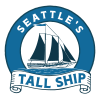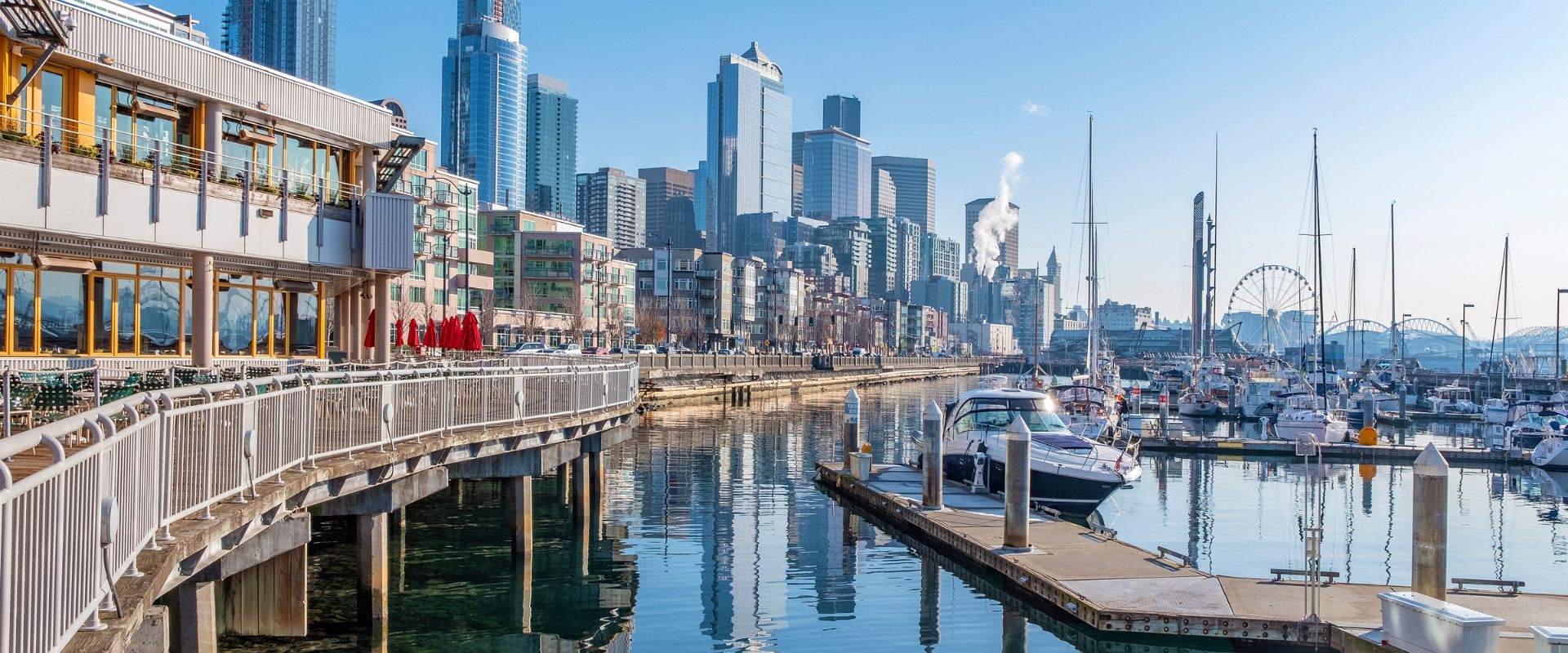
Living With the Tides: Stories From the Seattle Waterfront
The waterfront is buzzing with change. With the new Waterfront Park nearly complete and its grand opening celebration set for September 6, it feels like the right moment to pause and look back. The piers, docks, and tides here have shaped Seattle’s story for more than a century, and they still shape the lives of people who live and work along the water every day. From fishermen and longshore workers to families who grew up with salt in the air, the waterfront isn’t just a backdrop — it’s a character in Seattle’s history.
This moment of transformation is more than a facelift. The new park blends modern design with deep roots, creating a space where Seattleites and visitors can stand at the edge of the city and feel that familiar mix of salt air, ferry horns, and endless horizon. It’s a reminder that this is, and always has been, a city defined by the sea.
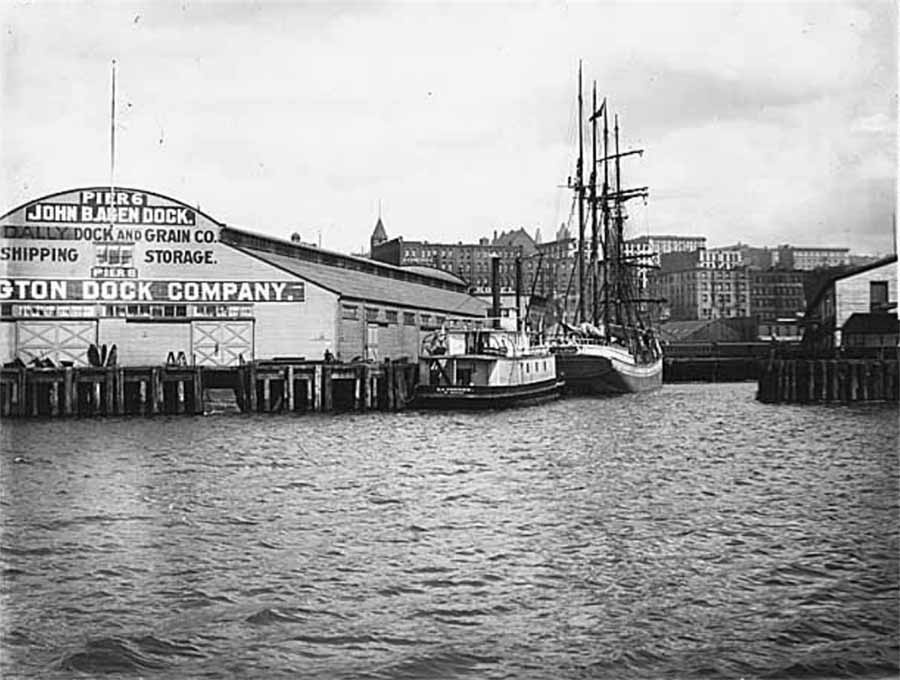
Voices of the Seattle Waterfront – The Professionals
The Seattle waterfront has always been a place of arrivals and reinvention. Few people embody that better than Mike Omura, who first stepped into Elliott Bay in 1958 as a young boy aboard the Hikawa Maru. “I remember coming into Elliott Bay… there used to be an old sign that said ‘Port of Seattle’—a red sign—above the old Port of Seattle building which was on Pier 66; I remember thinking ‘Oh that’s so cool.’” That first sight left a mark, and years later, Omura would find himself shaping the very same spaces as an architect.
For Omura, the waterfront is a place that holds his memories and shapes his story. He laughs remembering his first words in English, learned from bunkmates on the ship: “salt” and “pepper.” It’s a small memory, but it says everything about how the waterfront shaped his early days in a new country. Decades later, as the city changed, his work helped ensure that history stayed part of the future. “So many of us who are Asian have a connection to the waterfront,” he’s said. “Our fathers and grandfathers worked on the waterfront, doing canneries, lumber work.” That shared experience made his work personal — a way of honoring the families and communities that built their lives along the tide.
Others have played their parts in that transformation, too. Marshall Foster, who led the Office of Waterfront and Civic Projects, often talks about the delicate balance between honoring history and embracing progress. And Gerry Johnson, a longtime board member of Friends of Waterfront Seattle, has worked to ensure the new waterfront serves everyone and still reflects the history that shaped it.
Personal Memories Along the Seattle Waterfront
Not every story is about grand projects or sweeping changes. For many, the waterfront is woven into the quiet moments of everyday life.
For Dennis Frair, a fisherman in the 1970s, the docks were a place of comfort and routine, a true home on the water. “I’ve been a fisherman all my life here in Washington and used the Sound for fishing and launching and coming into town,” he recalls. He remembers tying up his boat at the Washington Street Boat Landing after long days on the water, often stopping for a quick meal at Ivar’s before heading home. “You could come in from fishing, have lunch at Ivar’s… you could pull your boat in… have lunch or dinner and then leave again,” he says. That simple rhythm — dictated by tides, weather, and the hum of the city — gave shape to his days and tethered him to the water in a way that never faded.
His experience isn’t unique. Tony Chinn grew up with stories of his mother working along the docks, shelling crabs in one of the many bustling seafood shops. And for the generations of longshore workers documented in the Waterfront Workers History Project, the waterfront is less a workplace and more a community. Their stories speak of pride, resilience, and a deep sense of belonging to a city that moves with the tide.
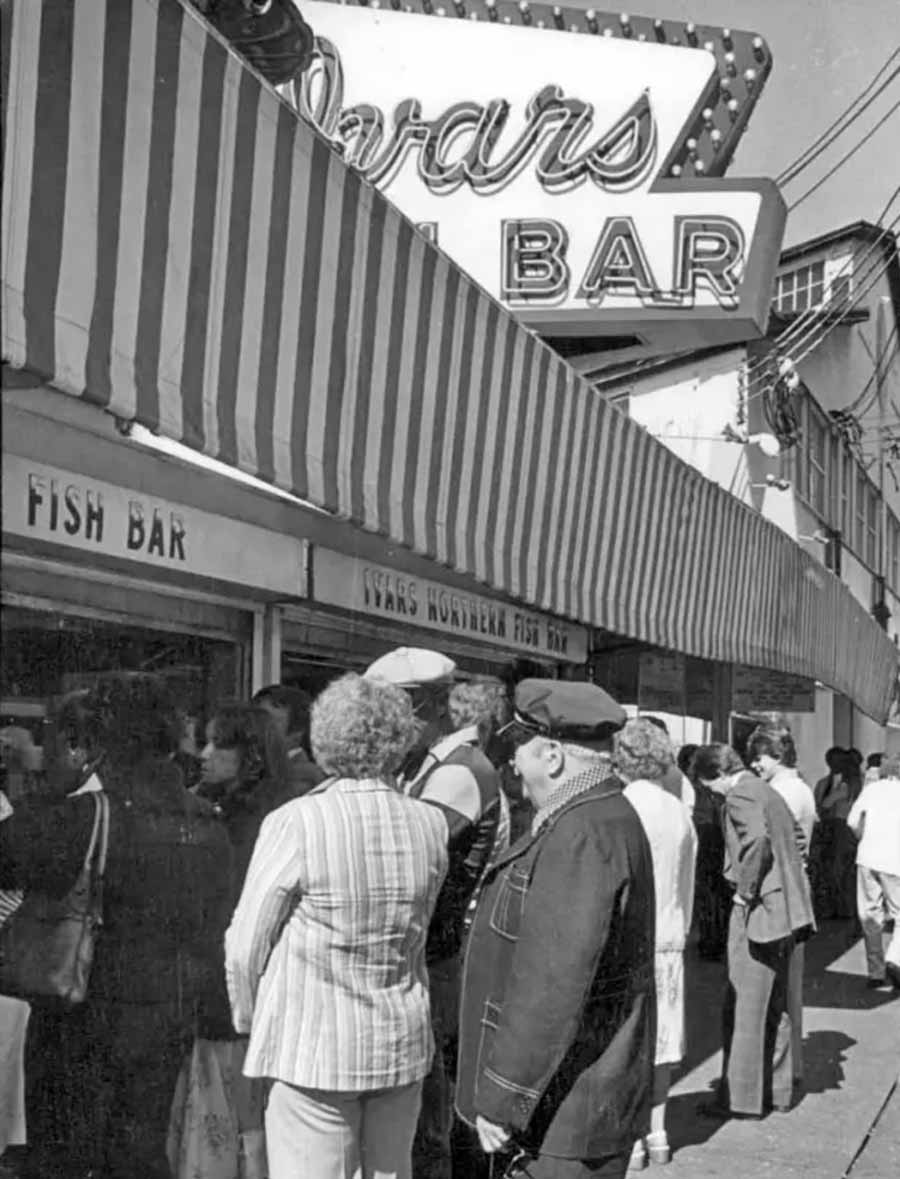
Looking for an unforgettable day on the water? Seattle’s Tall Ship’s “Bay Lady” offers a unique opportunity to experience the magic of tall ship sailing in the heart of Seattle. Step aboard this magnificent vessel and sail into history as you take in the beauty of Elliott Bay and the Seattle skyline. Don’t miss your chance to embark on a one-of-a-kind adventure—book your sail today!
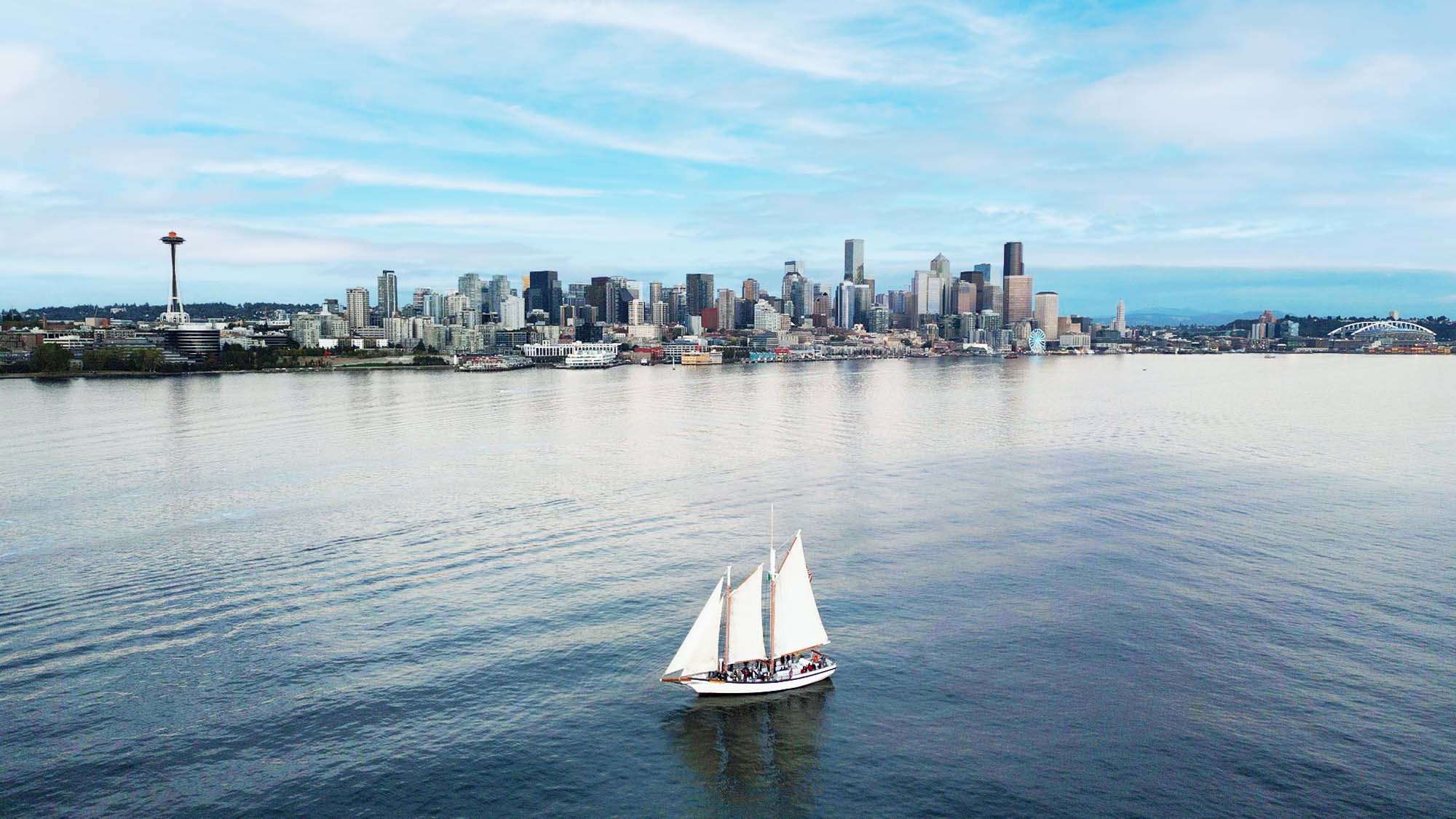
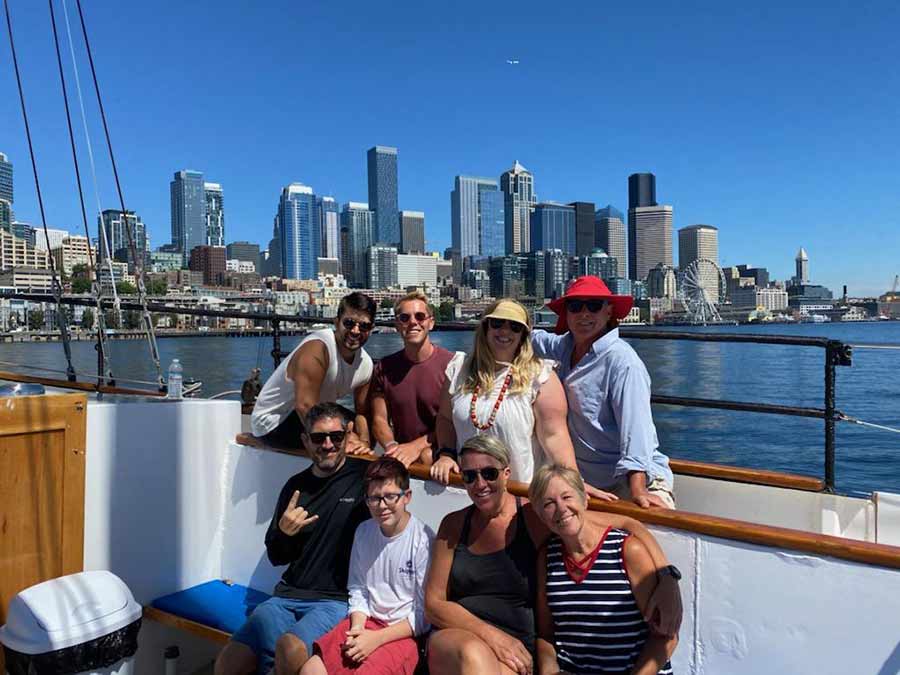

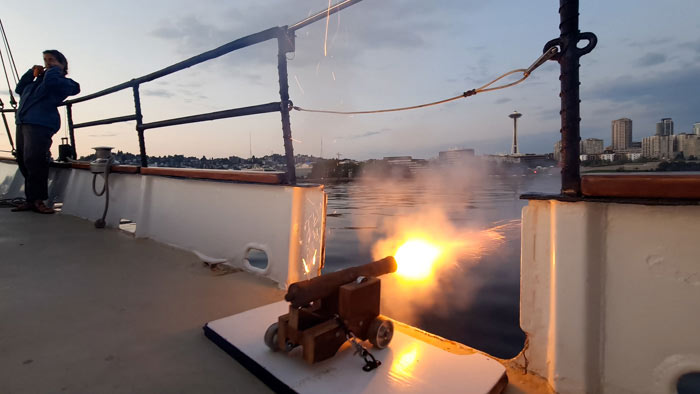
Guests enjoy the sights and sounds of a tall ship tour onboard Seattle’s Tall Ships, “The Bay Lady”.
Indigenous Connections to the Seattle Waterfront
Long before ferries and freight cranes, the shoreline was a place of gathering, trade, and reverence for the Coast Salish people. That connection hasn’t faded. To this day it lives in the voices and practices of those who still call the waterfront a relative.
For Marylin Wandrey, a Suquamish elder, that relationship is both sacred and practical. As captain of the Raven canoe, she’s spent nearly three decades guiding crews through the waters of Elliott Bay. Interviewers recall her describing the awe and danger of paddling near container ships: “coming so close that people in the canoe thought they were near death.” But in her telling, there’s no fear — only respect for the power of the tides and the shared space between ancient craft and modern industry.
Wandrey’s life as a weaver and cultural leader is another thread tying her to the water. The tides mark the seasons for gathering materials, and the shoreline offers a living reminder of the teachings passed down through generations. “The tide tells you when to go and when to wait,” she’s said. “And you listen, because it’s been here longer than you.”
That sense of deep connection echoes in other voices, too. Gabriel Prawl, the first Black president of ILWU Local 52, often speaks of the intersection between heritage and labor — of docks as both a workplace and a place of identity. And in the oral histories collected through the Waterfront Histories project, tribal elders share perspectives that ground the modern cityscape in something much older and much deeper: a relationship with the land and water that endures, no matter how the skyline changes.
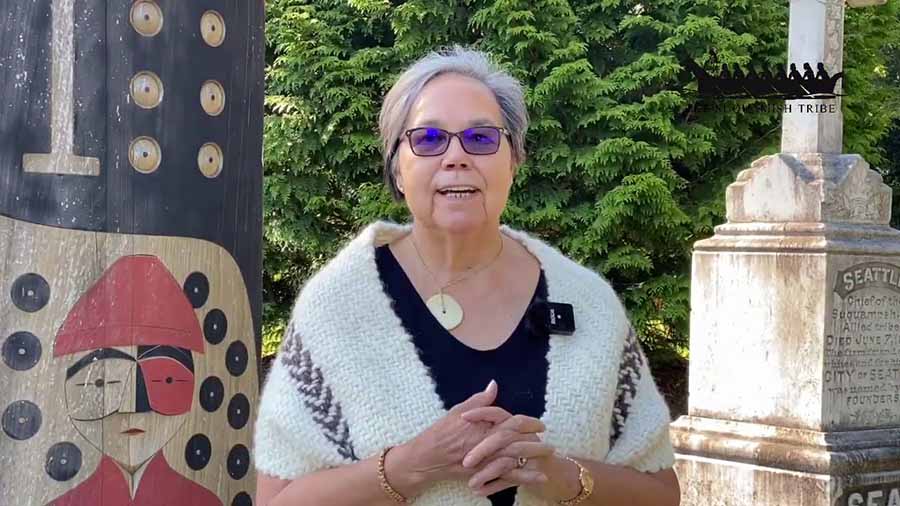

Celebrate From the Deck of Seattle’s Tall Ship
On September 6, as the city comes together to celebrate the grand opening of the new Waterfront Park, there’s no better place to take it all in than from the water itself. Seattle’s Tall Ship is marking the occasion with a special sailing schedule and reduced fares, opening up the deck to anyone who wants to experience the city the way generations before us have… from the rhythm of the tide.
From the deck, you’ll see the waterfront in motion: ferries gliding in and out, families gathering along the piers, and the park stretching along the shoreline in its new chapter. It’s a chance to connect to history in the most natural way possible, and feel the same salt spray and breeze that have greeted fishermen, longshoremen, and sailors for more than a century. For schedules and tickets, visit Seattle’s Tall Ship and make the celebration part of your own story.
The Seattle waterfront has always been a place of change, but also of connection. The faces and skyline may shift, but the rhythm of the tide stays constant, pulling past and present together in ways that are easy to feel but hard to explain.
As the city turns the page with the new park, there’s no better time to create your own memory here — to walk the piers, hear the gulls, and see the water the way generations have before you. And if you want the truest perspective of all, step aboard Seattle’s Tall Ship during the grand opening celebration. Out on the bay, with the city rising behind you and the tide moving beneath you, you’ll understand why living with the tides is part of what makes the Seattle waterfront timeless.
Book a sail with Seattle’s Tall Ship
If you have never experienced the thrill of sailing on our tall ship, there is no better time to try than now. With multiple sailing times and experiences available, our family-friendly harbor experiences are a must-do Seattle activity. Join us today!
